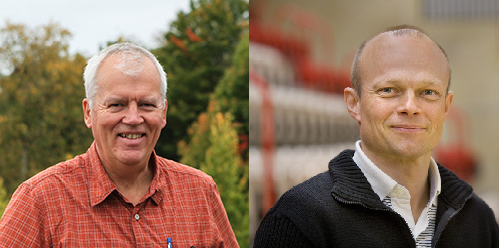Text
From live webinar on 24 June 2020
BJØRN AAS - senior engineer, Centre for Sports Facilities & Technology, Norway
- Leader of artificial turf project KG2021: https://www.ntnu.no/siat/kunstgress2021
- A better solution to remove harmful substances instead of trying to protect the surroundings.
- Always start by asking: Who is the user?
- Remember: Artificial turf has become relevant for other sports than football.
- The big focus on the top layer and infill material should not overshadow possibilities of innovating the shock pad. Has great potential.
- Test methods of usability have not been adequate. Fifa is also working on test methods for users and usage.
- Design for the users: Huge difference between designing for schools and arenas.
- A question of shoe/turf/leg interaction – the shoes and turf we can change.
- There is a need for maintenance equipment more fit for the system – not just any machine for any turf.
- Great worry for the quality of the fibers - 0,5 – 5 % loss per year. Not enough precautions taken. Low quality in the polymers and some times a lack of UV-resistance additive. Also low quality in backing and tafting.
- Environment: Cheapest to remove polluting materials. And to do it at product level, not field level.
- Life Cycle Cost (Total cost of ownership over 10 years): Pitches with artificial infill are often more expensive than ones with organic or no infill.
- DRIVE: A system for maintanance and management developed. Being tested and soon translated into English.
- In the future:
- Design for the users - Long term performance tests of pilot fields - Operation and maintenance using DRIVE - Design and operation of sub terrain heating systems - Re-cycling of materials - Guideline for contracts: disposal, civil works, artificial turf installation - Impact of salt on the environment during winter operation - CO2 –footprint of systems - User exposure in indoor facilities.
- Especially research on heating of the surface in winter time instead of salt (more salt is being used for defrosting artificial turf pitches in Norway than for all of their highways!)
10 year total ownership cost for different test fields in Norway - better and more expensive systems can be cheaper in the long run! Right click and open in new tab:

HOLGER KORTBEK – Head of Sports, Gladsaxe Municipality, Denmark
- 3½ football pitches to be replaced.
- Trying to challenge the view on 4G pitches not being good enough.
- Expensive to buy, but a financial advantage in the long run.
- Huge difference between 4G products – both in quality, materials and construction.
- Six different products chosen à tested as small samples with similar ground and foam pad underneath.
- User testing and feedback forms among users à four best ones chosen and made into test fields.
- A challenge that individual users compare to what they are used to.
- Shoes are important. Wrong shoes can ruin a field. Implement in production.
- Detailed and systematic questionnaires for user testing and evaluation will decide, which one of the four testing fields will be selected for the final 3½ large pitches (27000m2).
- Sustainability: It’s a matter of choice à there is a need for testing and innovation à if we actually mean sustainability (and not just as a fancy word)!
- Nothing happens if we don’t try.

